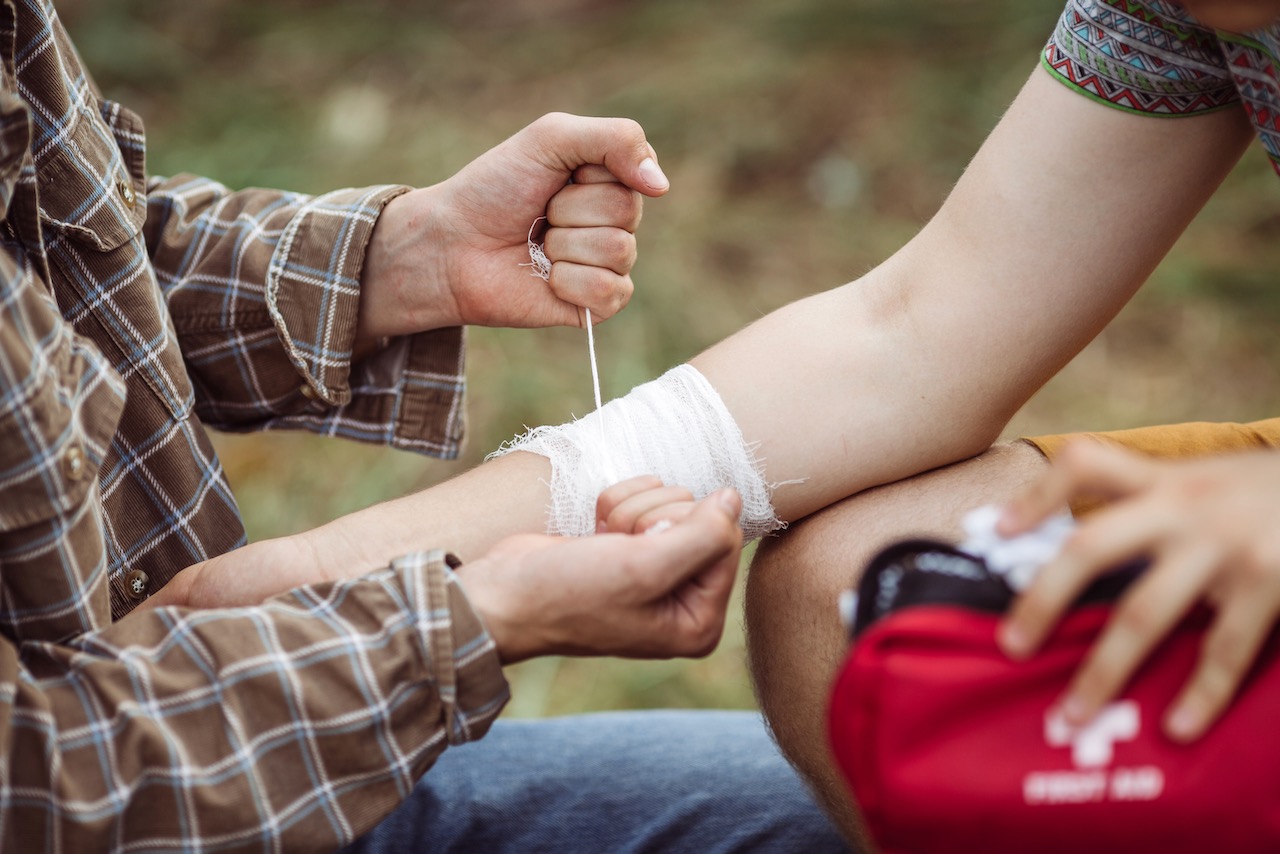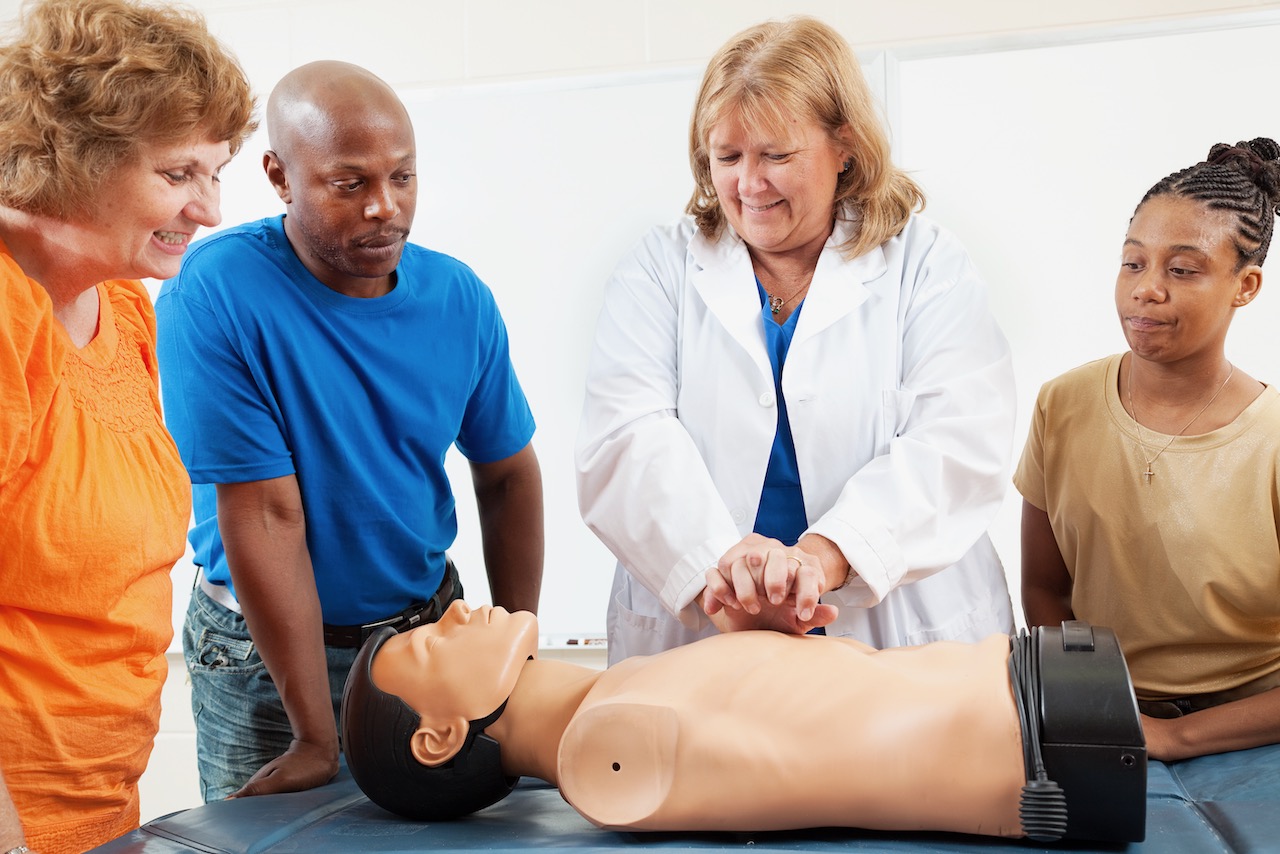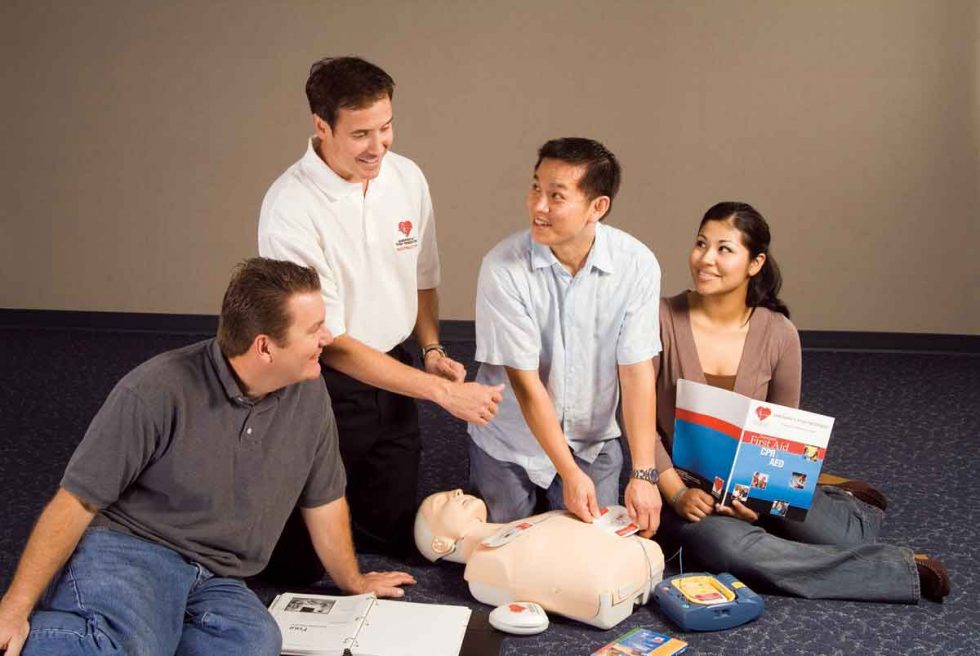There’s no knowing where, when or what kind of a medical emergency is going to occur. It could be a heart attack in a workplace or a choking incident at a restaurant. No matter what incident you’re faced with, the last thing you want to feel in the moment is helplessness. By having a first aid certification under your belt, you’ll have the knowledge and the confidence to act in many emergency situations.
We’re going to look at what first aid is, why first aid knowledge is important and what you will learn in an average first aid course. Then, you’ll find a number of available EFR courses to sign up for to ensure that if a situation ever arises, you’re ready to step up.

As the “first” part of the term indicates, first aid is the initial steps of resulting medical treatment to an injury. First aid can be a response to a wide range of problems, including both life-threatening and non-life-threatening issues.
Additionally, first aid is commonly administered at the site of the incident or injury’s occurrence.
When any injury occurs, the presence of a person who holds a first aid certification can make a big difference.
Yes, a first aid certificate covers life-or-death situations. But, it also covers non-life-threatening injuries, too. The correct treatment of seemingly “minor” injuries can decrease the possibility of any more major issues from occurring. First aid is also proven to increase the success of recovery from both minor and major injuries.
A good example of this principle is a small cut on someone’s skin. Correctly treated, the cut can heal in a few days and pose no additional issue to the patient. Left alone or incorrectly treated, even a small cut on the skin can lead to a serious infection, which potentially could be life threatening.
Apply this logic to any commonly encountered medical injury, and it’s easy to see just how valuable a first aid certification can be.

Cardiopulmonary resuscitation (or CPR) refers to a single, life-saving skill, which can fall under the umbrella term “first aid.”
First aid is used to describe a wide variety of medical treatment administered to patients. As mentioned above, this can include situations requiring CPR, but it also covers the treatment for multiple other medical issues.
CPR certifications and BLS certifications usually focus on CPR and key life-saving skills. First aid courses teach CPR and also how to deal with a wider range of medical emergencies, including the ones you are most likely to encounter. Both online and in-person first aid courses are available.
A standard first aid course might cover some or all of the following topics:
Stroke Anaphylaxis Asthma-Related Emergencies Burns Cardiopulmonary Resuscitation (or CPR) Choking Heart Attack Severe Bleeding Fractures Shock Poisoning
First aid is a wide-ranging topic, so there are multiple options, depending on how much time you want to spend learning and how many topics you want to cover. Here are several EFR courses that cover first aid to varying degrees:
The Emergency First Response Primary Care (CPR) Course covers several key topics. This ensures you have the confidence required to step up in an emergency situation. The 4.5 to 6-hour course will teach you how to assess the scene, deal with severe bleeds, manage shock, use barriers and more emergency-specific skills. The course also covers CPR, often in addition to Automated External Defibrillator (AED) and emergency oxygen administration.
The Emergency First Response Secondary Care (First Aid) Course is a great option for anyone looking to gain (refresh or reinforce) a comprehensive set of first aid skills. Through knowledge development, skill development and realistic scenario practice, course attendees will learn how to deal with both life-threatening and non-life threatening situations. Elements covered in the course include asthma, choking (adult, child, infant), CPR (adult, child, infant), dislocations, heatstroke, animal bites and poisoning.
Certain elements of correctly administered first aid look different depending on whether they are being administered to adults or children. In the Emergency First Response Care for Children Course, you’ll be able to learn a range of these essential skills. This 7 to 8-hour course is built using the Pediatric Working Group of ILCOR guidelines. Skills taught during the course include assessing the scene of an indecent, managing shock, addressing serous bleeding and providing the right care for a wide range of potential injuries you may have to deal with as a parent, relative, babysitter or someone who works with children.

A medical emergency is just as likely to occur in your workplace as anywhere else. From performing CPR to treating a possible fracture, choosing to enroll your employees in one of these knowledge-filled courses helps to ensure everyone is ready to deal with a variety of scenarios. Available within the United States, the United Kingdom and Canada (and including region-specific elements to meet local regulatory body requirements), the Emergency First Response Workplace Courses courses cover both primary and secondary care.
Not enough time to cover everything? Consider beginning your first aid journey by covering the life-saving basics with the Emergency First Response CPR & AED Course. While not as intensive as the other EFR courses, this 2.5 to 4-hour program teaches the principles of and how to perform basic CPR and use an AED. These skills alone can be the difference between life and death. Correctly administered CPR can increase a patient’s chance of survival by up to 50 percent.
Ready to learn first aid so you can become an integral part in the chain of survival when the time calls for it? Use our course finder to locate an EFR course near you. Alternatively, contact your local PADI Dive Shop to discover what courses are available.
SIGN UP FOR a FIRST AID COURSE NOW
Share This
